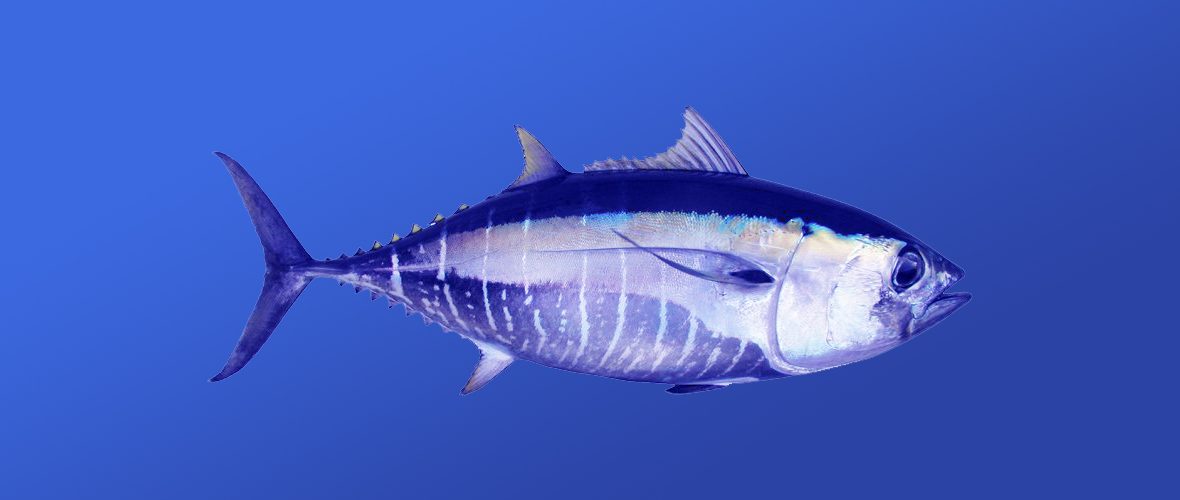
The bigeye tuna is a true tuna that belongs in the mackerel family. There are 2 species, known as ahi. The other is the yellow fin tuna. They are found in all temperate and tropical oceans, sans the Mediterranean Sea. Due to the threats of overfishing and climate change, these fish are listed as Vulnerable by the IUCN. Their numbers are also decreasing. The last evaluation of bigeye tuna by the IUCN was in 2021.
First the Stats…
Scientific name: Thunnus obesus
Weight: Up to 392 lbs.
Length: Up to 8.2 feet
Lifespan: Up to 16 years
Now on to the Facts!
1.) Vascular counter-current heat exchangers keep their body temperature above the ambient water temperature for short periods. So, yes, these fish can be considered short-latency, physiological thermoregulators.
2.) Their large eyes allow them to see better in deeper, darker water.
3.) They reach sexual maturity in 2 – 4 years.
4.) Bigeye tuna can be considered nocturnal (active at night), as they descend to cooler, deeper waters at around dawn and return to shallower waters at dusk.
5.) A majority of their time is spent at depths of up to 1,312 +/- feet.
But wait, there’s more on the bigeye tuna!
6.) Some studies suggest that there is migratory behavior, to some degree, based on the region.
7.) Spawning takes place pretty much year round in the tropical locations of the Pacific Ocean.
Did you know…?
With their unique physiology, they are able to tolerate deeper water dives and lower oxygenated water.
8.) The Gulf of Guinea is the only known Atlantic Ocean spawning location.
9.) These tuna prey on epipelagic fish (lanternfish and barracuda, for example), mesopelagic fish (hatchetfish and mackerel, for example), cephalopods, and crustaceans.
10.) In 2012, approximately 450,500 metric tons of bigeye tuna were captured by commercial fishing vessels.
But wait, there’s still more on the bigeye tuna!
11.) The Atlantic Ocean populations are close to being overfished.
12.) Climate change has resulted in a global reduction of marine phytoplankton. Phytoplankton is the beginning of the food chain in the ocean. This starts a downward chain reaction of epic proportions.
13.) Many seafood sustainability guides promote the consumption of other types of tuna to aid in giving bigeye tuna populations a chance to bounce back.
Now a Short Bigeye Tuna Video!
Be sure to share & comment below! Also, check out the Critter Science YouTube channel. Videos added regularly!
Want to suggest a critter for me to write about? Let me know here.
Some source material acquired from: Wikipedia & IUCN



